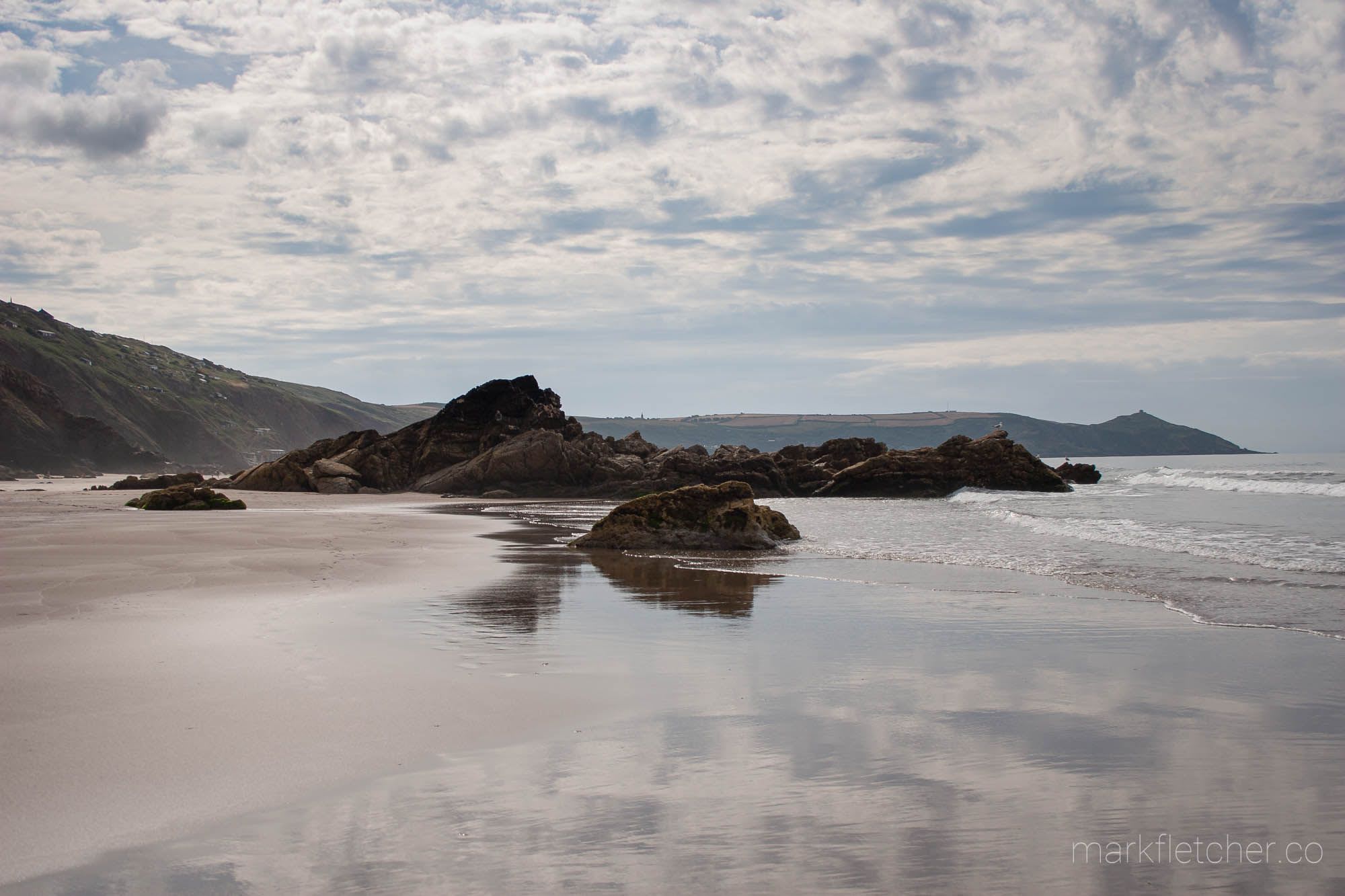
Leaving the car on the clifftop, we follow the coast path for a while, meandering towards the usual spot. The path winds down the cliff, passing chalets on our left and right. Up ahead, there are faded letters and an arrow stenciled into the blockwork of a wall, “to the beach”.
At the bottom of the cliff at last, dusty path giving way to bedrock and then sand. We slip our sandals off, toes curling into the cool sand. Our way along the beach to the east is over sea-smoothed boulders and through the tide-widened fractures of a rib of bedrock.
Towels down, we strip off and run across the rippled sand, splashing into the surf, the cold tugging our breath away. We swim until our toes go numb, then retreat up the beach to explore.
The tides give and take away the sand, causing inexorable changes in beach height - bar and berm. The wave-rippled sandscape of the beach changes by tide and by season. Winter storms rip the sand out to the bay and bars form, but the summer’s gentler waves push it up onto the upper foreshore. To view the beach as a timelapse would see rocky features pulse in and out of view as the sand moves, deep pools and channels forming and fading. To the observant visitor, the differences are confounding - familiar rock formations wrought new and novel by changed sand levels, new strata and colourations revealed beneath crystal-filled rock pools.
Down at the end of an outcropping of cornish slate, the rock shines purple, intertidal waves and sand having ground and polished it smooth. Instead of jagged rock, the forms become pillowy and rolling. Here, streaks of quartz glisten through like melted chocolate stirred through cream. There, a trapped sand has worn a hollow, over and over through countless tides until you find the metre-wide cauldron of today.
The rocks are smooth and cool to my feet. Patches of common mussel nestle in indentations in the rock. Curiously, none of them are very large; perhaps the churning breakers wrench them free if they get too big. I climb up the spur of rock, and it becomes rougher - jagged and uncomfortable to my soles. It's completely covered with innumerable tiny barnacles. Exposed, they're closed tight, but open once underwater to reveal a delicate arm that wafts back and forth. The barnacle uses that graceful appendage to capture particulate food from the water passing by. A rockface full of them resembling dancers on a stage, waving feather boas.
I look out to sea, drawn by the plunging breakers. The tide turned some time ago. Whitsands is a changing beach - easy to get cut off, stranded on the wrong side of a rock outcropping. We hastily stuff bags with damp bathing suits and sandy towels. Time to rock-hop, wave-jump, pool-dodge - we get wet feet anyway. The climb up the cliff is breathless and arduous as the sun dips lower.
I know this place. I only have to close my eyes and I'm back on the cool sand, faced by crashing waves and backed by bright purple slate, the smell of salt filling my nose.
